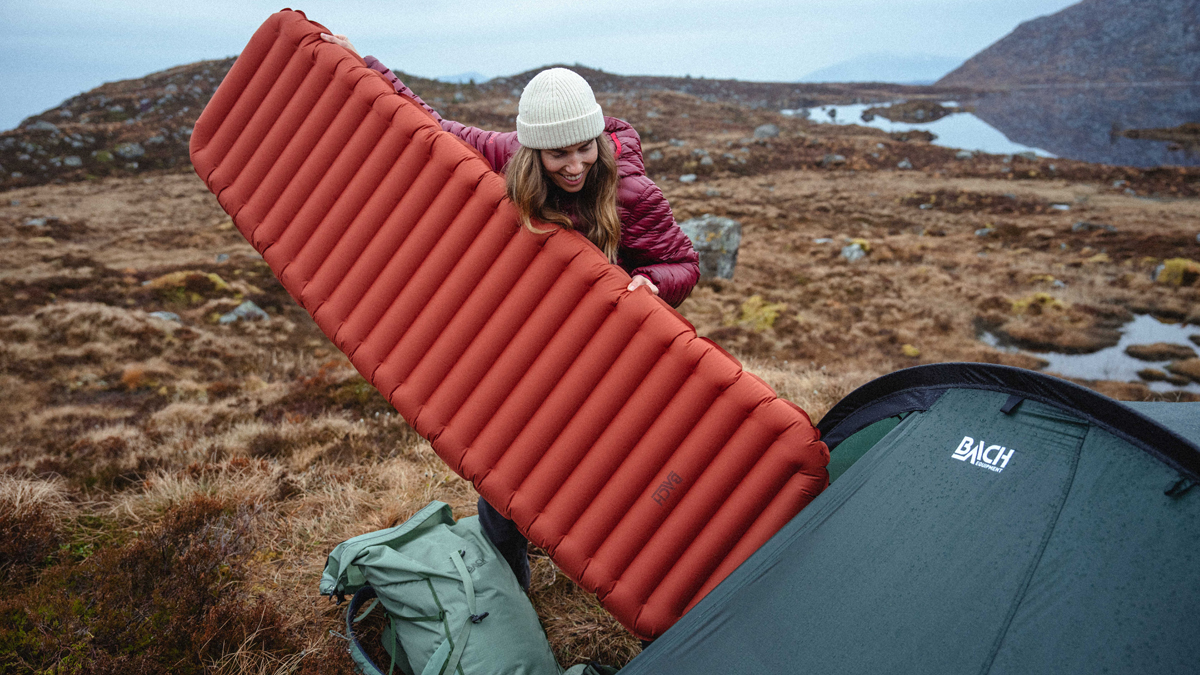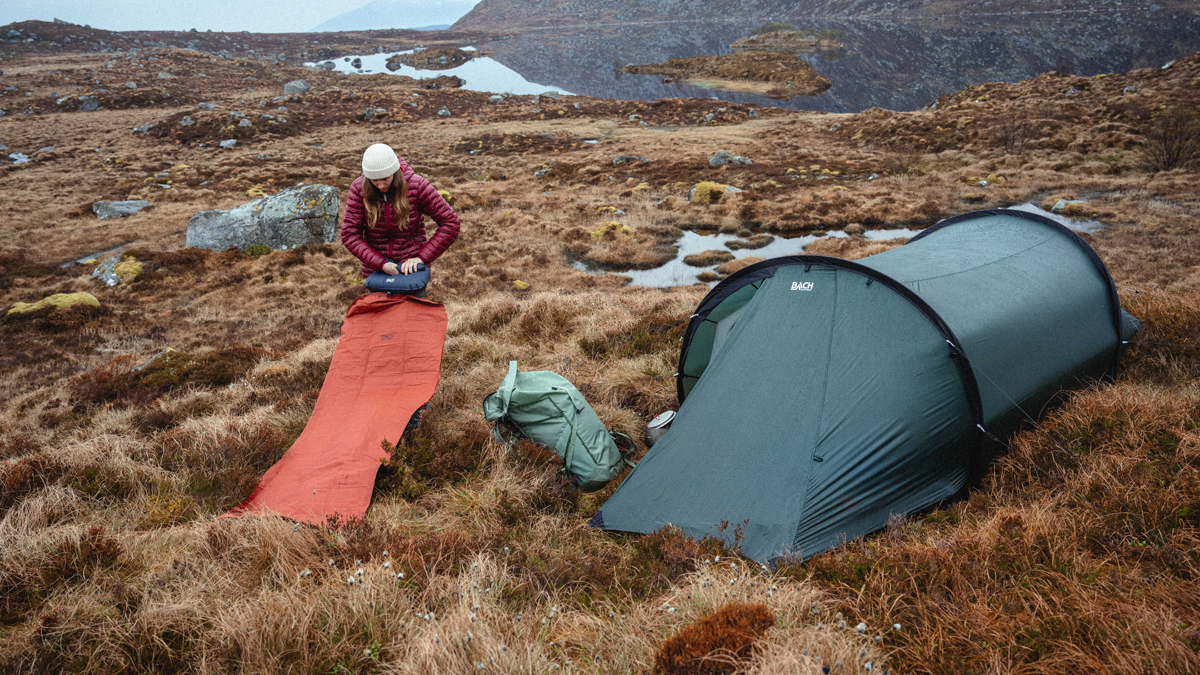How to take care of an inflatable sleeping pad
Inflatable sleeping pads have gained immense popularity among outdoor enthusiasts for their lightweight design, compactness, and unmatched comfort. Whether you're embarking on a wilderness backpacking expedition or enjoying a camping trip with your friends, proper care and maintenance of your inflatable sleeping pad is crucial for both its longevity and your quality of sleep. Additionally, having the knowledge and skills to repair minor damage can save you from uncomfortable nights in the great outdoors. In this article, we will provide invaluable tips on how to effectively care for and repair your inflatable sleeping pad, allowing you to maximize its performance and enjoy a cozy night's sleep in nature.

• Be gentle with your pad. To safeguard your sleeping pad from unnecessary wear and tear, avoid tossing it at the bottom of your backpack without any additional protection. Instead, utilize the stuff sack provided to protect it from potential damage. The stuff sack helps keep your pad safe from rough surfaces and sharp objects that may puncture or damage it during transport. It also keeps the valve away from dirt, which prevents the risk of leakage.
• Use additional protection when needed. When using your pad outside a tent or shelter, it's wise to take extra precautions. Check the ground for sharp objects like stones and lay down a ground sheet or place a foam pad underneath your sleeping pad. These additional layers act as a barrier, protecting your pad from sharp objects that could potentially cause damage. With this added protection, you can sleep easy, knowing that your pad is safeguarded against any unexpected encounters!
• Minimize moisture. It's important to limit the amount of moisture that enters your sleeping pad, as excessive moisture can lead to mold if the pad is not properly aired out before storage. To reduce this risk, make use of the pump bag provided, which can help minimize the amount of moisture that enters the pad during inflation. The pump bag not only makes inflating your pad a breeze but also acts as a protective barrier, keeping moisture at bay.

Naturally, your pad might get dirty after a lot of use. Here are some tips on how to take care of it:
• Gentle cleaning: Keep your pad clean by wiping down the surface with a damp cloth. If needed, use a mild, non-detergent soap for tougher stains. Be mindful not to let water enter the valves and keep them closed during the cleaning process.
• Avoid machine washing and drying: While it may be tempting to toss your pad in the washing machine, refrain from doing so. The lightweight materials and insulation used in sleeping pads are not suited for machine washing or drying, as they may get damaged.
• Air drying only: After cleaning, allow your sleeping pad to air-dry naturally (while inflated). Lay it flat or hang it on a clothesline, ensuring proper ventilation. It's important to find a shaded area to prevent prolonged exposure to sunlight, which can damage the pad's fabric.

How to store an inflatable sleeping pad
After each trip, air your inflatable sleeping pad out in a warm and dry area. Store your sleeping pad outside of its stuff sack. Choose a cool, dry place and either lay it flat, hang it on a hanger or loosely roll it up. Remember to leave the valves open during storage to prevent any trapped moisture.
How to fix a hole in a sleeping pad
You can fix a hole in your inflatable sleeping pad temporarily or permanently. When you're out in the wild and need a quick fix, follow these steps for a temporary patch:
• Inflate your mattress and locate the puncture. Going over the fabric with a wet cloth is usually sufficient to show you where the leak is coming from. No need to jump into the lake!
• Deflate your mattress.
• Make sure the emergency patch provided is large enough to cover the damaged area with some extra space (at least 1 cm) around it.
• Give the area around the puncture a good clean with a wet wipe and let it dry thoroughly.
• Peel off the backing from one of the TPU patches provided.
• Center the patch over the punctured area and press down firmly to secure it onto the pad.
• Voilà! Your temporary repair is done and you can get back to enjoying your adventure.

When you're back home and ready for a more long-term solution, follow these steps for a permanent fix:
• Inflate your mattress and locate the puncture.
• (Optional) If you prefer a precise fit, cut the fabric patch to match the size of the damaged area, leaving at least 2 cm of clearance around it (or around the temporary field repair patch if you used one).
• Grab some urethane-based adhesive from your local outdoor shop.
• Apply a thin, even coat of adhesive onto the fabric patch.
• Press the patch firmly onto the punctured area and hold it in place.
• Allow the adhesive to dry completely for a full 24 hours before using your sleeping pad again.
Now your sleeping pad is as good as new, and you can sleep easy knowing you've tackled that pesky leak. Note that if you want this repair to be done by our team, you can always reach out to your closest BACH Care & Repair Centre.
How to repair a valve on an inflatable sleeping pad
Premium-quality inflatable sleeping pads like ours are made from the best possible materials, so a broken valve is an extremely rare problem. If you notice that you have a small leak coming through the valve, you should always reach out first to your dealer or if you have BACH sleeping pad to the closest BACH Care & Repair Centre.

How to repair a pressure loss in an inflatable sleeping pad
Be aware that during the night the temperature drops a bit. This can lead to reduced pressure in some air sleeping pads – especially if you inflate them by mouth. However, premium-quality inflatable sleeping pads like ours always come with a pump sack, which prevents this issue . So, the best way of avoiding this problem is to invest in better gear. If you feel that your air pad is losing pressure and you cannot find a hole, the best thing to do is to reach out to your dealer, manufacturer or our BACH Care & Repair Centre. If you encounter any other problems with your BACH gear, always reach out to your dealer first, or contact our closest BACH repair center. Our experts will analyze the problem and find the appropriate solution.


